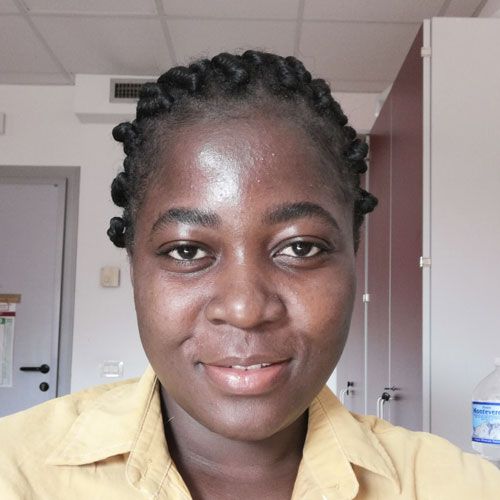
Vincentia Emerson Agbemeh
I am Vincentia Emerson Agbemeh from Ghana. I started my journey in Materials Science at the Kwame Nkrumah University of Science and Technology (KNUST) in Kumasi, Ghana where I received my Bachelor of Science degree in Materials Engineering in 2015. My thesis focused on optimisation of laterite-alum ratio for effective fluoride removal in contaminated water. This work was part of a project in the Materials Engineering Department which focused on effective methods for purification of underground water from the Northern part of Ghana which had high levels of fluoride using local and cheap readily available materials in the region. After my bachelor’s Degree, I joined a paint company and worked in the Quality Control Department. I was responsible for testing of raw materials for production such oxide pigments, calcium carbonates in order to meet company standards. My team and I were also responsible for testing and approving production batch for viscosity, particle size and colour. In 2021, I received my Master of Science degree in Materials Science and Materials Technology at Saint Petersburg Institute of Technology (Technological University), Saint Petersburg, Russia. For my master’s dissertation, I focused of the ZnO based nanocomposites for antibacterial coatings on glass by means of photocatalysis. The method of synthesis used was the polymer-salt method which was an energy efficient, economical and eco-friendly method of nanomaterial synthesis. I am currently working with Professor Mauro Gemmi in IIT, Pontedera, Italy with research focused on 3D ED of organic nanocrystals.
PhD Project 2: 3D electron diffraction on organic nanocrystals
Supervisor: Mauro Gemmi
Hosting Institution: Istituto Italiano di Tecnologia - Center for Materials Interfaces, Pontedera, Italy
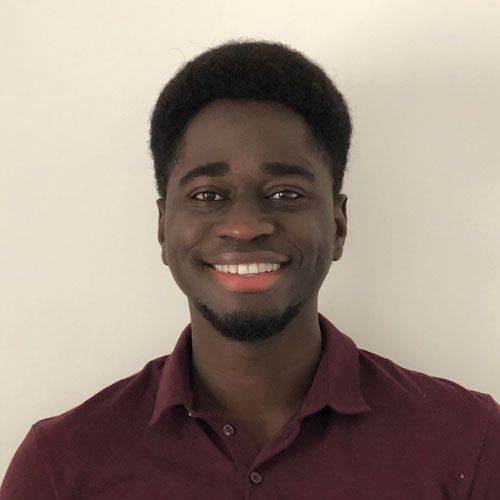
Moussa Faye
Moussa Faye got his Bachelor’s degree in 2020 at the University of Valencia (UV). For his BSc thesis, he worked with the analytical department developing a new green analytical technique for simultaneous determination of several drugs based on the use of Micellar Liquid Chromatography (MLC).
In 2021, he got his Master’s degree in Molecular Nanoscience & Nanotechnology at the Institute of Molecular Science (ICMol, UV), where he learned more about crystallography as well as several nanocharacterization techniques. He then joined the Functional Inorganic Materials (FuniMat) group, led by Dr. Carlos Martí-Gastaldo, to carry out his Master’s thesis titled “Controllable incorporation of amino acids to porous hosts (MOFs) for enantioselective separation of chiral drugs”.
He will be joining Prof. M. Gemmi’s group at the Istituto Italiano di Tecnologia (IIT) in Pisa as a predoctoral researcher in training (ESR#1) as part of the NanED programme, where he is expected to develop protocols for crystallographic characterization of electron beam sensitive porous materials (MOFs).
PhD Project 1: Electron nanocrystallography of heterometallic MOF
Supervisor: Mauro Gemmi
Hosting Institution: Istituto Italiano di Tecnologia – Center for Materials Interfaces Pontedera Italy
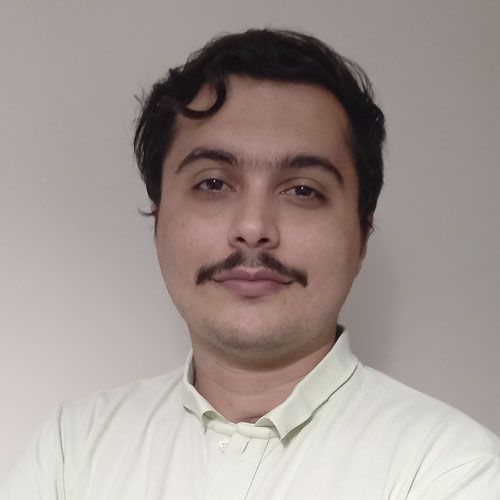
Amirhossein Hajizadeh
Amirhossein Hajizadeh got his bachelor's degree from the Iran University of Science and Technology in 2015. He studied ceramic materials during his bachelor's and worked on the mechanical properties of ceramic composites.
Later, in 2015, he joined the Corrosion and Protection of Materials group in Tarbiat Modares University devoted his master's to work on the synthesis and electrophoretic deposition of graphene oxide. He focused on the kinetics and mechanism of the electrophoretic deposition process to reveal the unexpected properties of graphene oxide during deposition.
After gaining his master's degree, his interest in electrochemistry motivated him to study electrochemical energy storage. So, he joined the Battery and Sensor group at Materials and Energy Research Center in 2017 and researched the electrophoretic deposition of battery cathode materials for six months.
Thanks to his experience in electrochemical processes, in 2020, he joined the Parthian Battery Company, working as a research and development member on battery materials. During his work, he mainly studied the synthesis of anode materials, e.g., Li4Ti5O12 and nano silicon. Also, he worked on producing spherical graphite and coating anode materials with carbon. In addition, he researched the electrochemical characterization of Li-ion batteries, their charge-discharge protocol, and their ageing mechanism. Finally, he investigated the composition of anode electrodes to optimize their performance to reach high energy and power density.
In 2021, he applied for a NanED project to continue his research on "In situ 3D electron diffraction for following reactions in gas and electrochemical environments". He found it a valuable opportunity to vast his knowledge on electrochemical processes and extend the application of electron crystallography in the in-situ studying of the processes in gas and liquid environments.
PhD Project 3: In situ 3D electron diffraction for following reactions in gas and electrochemical environments
Supervisor: Joke Hadermann
Hosting Institution: Universiteit Antwerpen - EMAT (Electron Microscopy for Materials Science)
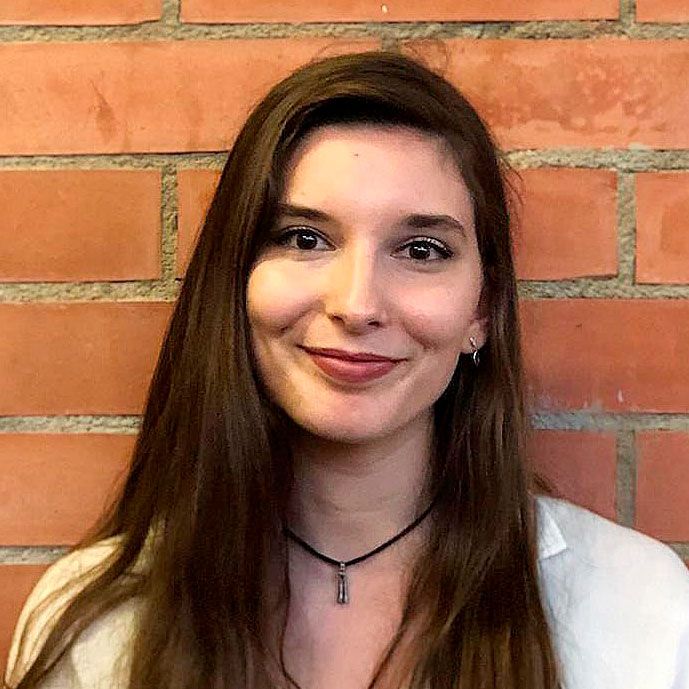
Laura Gemmrich Hernández
I started my career in geology in 2015 with a bachelor’s degree in the University of Barcelona (UB). During my bachelor I started working on the study of minerals in the department of Mineralogy, Petrology and Applied Geology. My bachelor’s thesis was on the Geology and mineralogy of the In-enriched Huari Huari deposit (Potosí, Bolivia). After finishing the bachelor’s degree, I continued with a master in Mineral resources and geological hazards in the UB and the Autonomous University of Barcelona (UAB). I finished my master’s with a thesis on the Trace element composition and U-Pb ages of Bolivian Tin Belt cassiterite. The following year I worked as assistant curator in the Natural Sciences Museum of Barcelona with the scientific mineralogy collection.
PhD Project 8: Structural investigation of cement hydration mechanism by electron crystallography
Supervisor: Ute Kolb
Hosting Institution: Johannes Gutenberg Universität Mainz
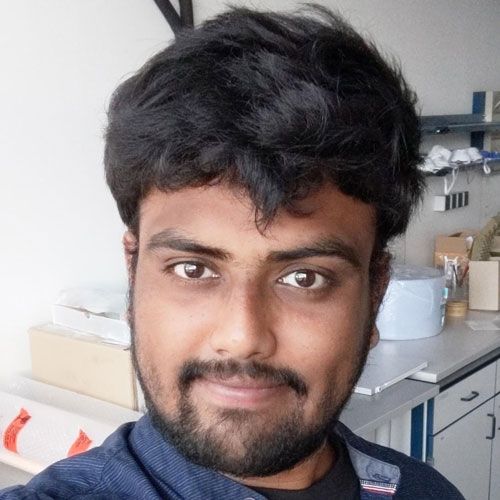
Chintakindi Hrushikesh
I graduated with a bachelor’s degree in Metallurgical and Materials Engineering at IIT Bhubaneswar, India in 2018. For my bachelor thesis, I started to work on developing a novel method for synthesizing a highly ordered nano-porous Alumina template by a quick single step Anodization of Aluminum.
After finishing my bachelor’s degree, I continued with the masters at IIT Madras, India. As a part of my master’s project with the help of my guide and DAAD Programme, I got an opportunity to do research at Karlsruhe Institute of Technology (KIT), Germany with the project related to the “Effect of strontium (A-Site) addition on structure and properties of perovskite-type high entropy ferrites (Gd, La, Nd, Sm, Y)FeO3, under the guidance and supervision of Prof. Horst Hahn. My work as an exchange student was to synthesize the High Entropy Oxides (HEOs) along with doping of a few metals (Group IIA) and to understand the effect of doping on the structural and magnetic properties. During this project, I have gained knowledge on crystallography in both Powder X-ray diffraction (PXRD) and electron diffraction (ED) along with the Rietveld Refinement of the PXRD data. I started my PhD in Lukas Palatinus’ group at the Institute of Physics (Fyzikální ústav – FZU) in Prague as a part of the European NanED Programme (ESR 4) on “Accurate structure refinement from 3D ED data”. I will be working on testing and optimizing the dynamical refinement strategy for various types of materials and data collection methods as well as generalizing the dynamical refinement to include the effect of crystal imperfections.
PhD Project 4: Accurate structure refinement from 3D ED data
Supervisor: Lukas Palatinus
Hosting Institution: The Institute of Physics of the Czech Academy of Sciences, Prague, Czech Republic
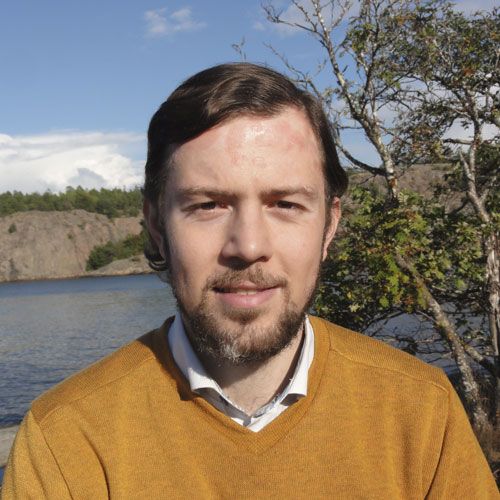
Branislav Jeriga
Branislav Jeriga got his Bachelor degree in Chemistry at Charles University in Prague in 2018 with a thesis work focused on conjugated polymers and their potential application as fluorescent sensors.
In 2020 he got his Master’s degree in materials Chemistry at Stockholm University, where he got first introduced to electron microscopy, crystallography and spectroscopy. For his Master thesis he was involved in testing and developing a workflow for data treatment of Electron Energy Loss Spectroscopy EELS data cubes in order to account for camera artefacts using advanced numerical methods.
He decided to continue in the fields of electron microscopy and crystallography by applying to the European NanED doctoral fellowship. He is now working on the project Quantitative analysis of electron Pair Distribution Function (ePDF) at Stockholm University, where he will be developing standard data collection and processing routines for ePDF.
PhD Project 7: Quantitative analysis of ePDF
Supervisor: Dr. Cheuk-Wai Tai
Hosting Institution: Stockholm University
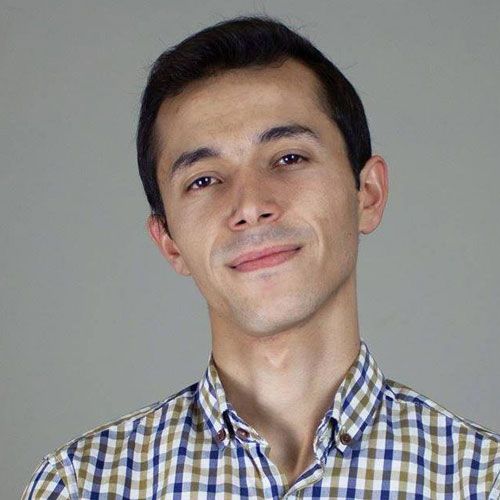
Senik Matinyan
Senik Matinyan received his medical training at Yerevan State Medical University, Armenia. He has been involved in a variety of research projects: from animal modelling of specific neurodegenerative disorders to creating deep brain stimulation systems with controlled feedback loop.
During his MD studies Senik developed strong interest in probabilistic modelling and together with his team they were working on understanding the internal defense mechanisms of the brain towards injury. It was possible to generate neural activity-based stimulation algorithms for the alleviation of behavioral changes after acute brain damage.
He joined Prof. J.P. Abrahams group at Biozentrum, University of Basel, as a predoctoral researcher in training as part of the NanED program. Senik will be working on the development of novel approaches for understanding the complex biomolecular machines in their native state.
PhD Project 14: Phasing of electron diffraction data
Supervisor: Jan Pieter Abrahams
Hosting Institution: Universität Basel
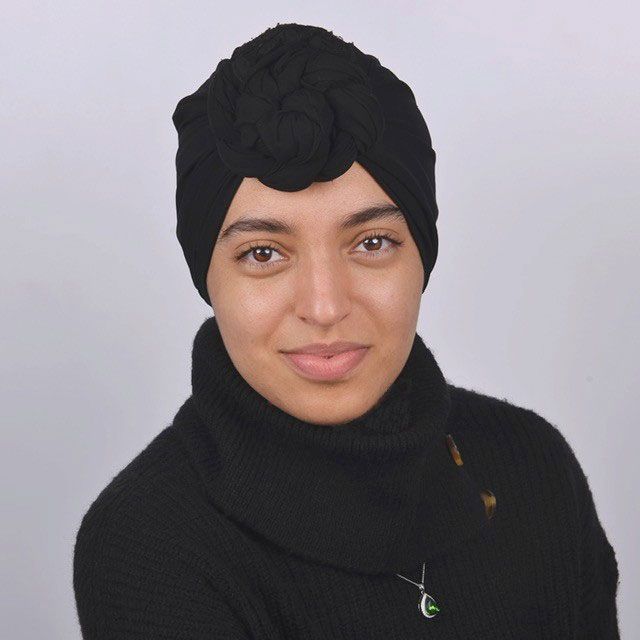
Amatassalam Ben Meriem
I am a PhD student at Basel University in the field of electron diffraction of biological single molecules and nanocrystals. I started my physics studies in 2016 at the University of Lorraine (France) and obtained my master’s degree in Condensed Matter and Nanoparticles in July 2021.
My educational background puts more emphasis on the field of nanophysics in its theoretical, experimental, and numerical aspects. During the M1 internship I have done at the Jean Lamour Institute in Nancy, I worked on a subject called “Idles waves in high-performance computing and comparison with kinematic waves”. Dealing with the challenges scientists have to face while solving some equations that require the help of supercomputers, the purpose of this study was to investigate the possibility to best describe, in the light of kinematic waves theory, the delays generated by the accumulation of data during their exchange among the processors.
In my second year of master, I chose to focus on the experimental side of my studies, so I specialized in crystallography and experimental techniques in nanoscience. With a team of searchers, Post-Doc and PhD students from the Jean Lamour Institute, I had the opportunity to work on the elaboration of a magnetic captor from the choice of the materials to the test of its inherent capacities. This included the use of one of the latest and most advanced devices and techniques, such as molecular beam epitaxy (in the DAUM tube), surface and properties analysis (Vibrating-sample magnetometry, HR-TEM…) and lift-off methods. Then, I concentrated more on the structural and magnetic analysis of a NO-releasing agent used as a drug to relax blood vessels: the Sodium nitroprusside. In order to collect that information, X-rays (through single-crystal and powder) and neutrons diffraction experiments have been led.
I discovered crystallography in 2019, the last year of my Bachelor of Fundamental physics when working with a biologist on the structural analysis of a protein from the GST family (Tau class). To learn crystallization techniques, I trained over the lysozyme to find the optimized conditions to grow crystals. As much as too concentrated or too dilute samples can result in either amorphous precipitate or clear drops when performing a PCT (pre-crystallisation test), to carry out a doctorate project is a work of details. Trying to find the right balance between hard work and enthusiasm is the challenge I launched myself, alongside the motivated, qualified, and welcoming Jan Pieter Abraham’s team.
PhD Project 15: Optimal data acquisition of biological samples
Supervisor: Jan Pieter Abrahams
Hosting Institution: Universität Basel
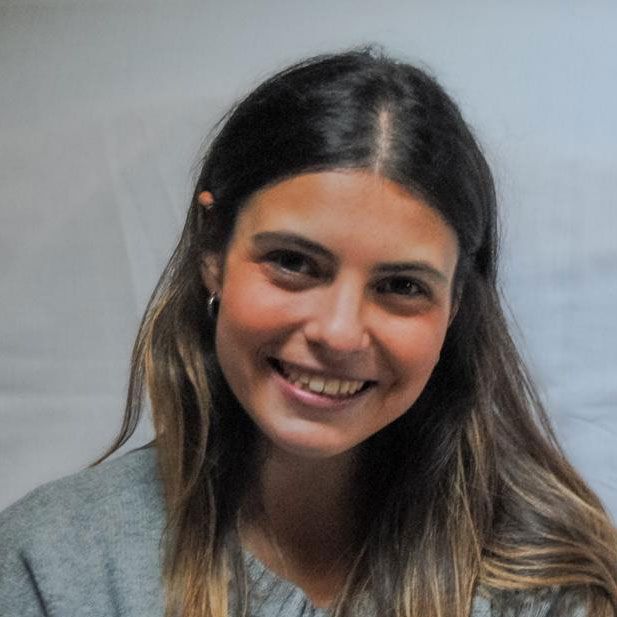
Erica Cordero Oyonarte
Erica Cordero Oyonarte graduated in Chemistry at Complutense University of Madrid (2017) and obtained her master degree in Molecular Nanoscience and Nanotechnology at Autonoma University of Madrid (2019). During her master thesis she was a researcher assistant at CSIC (Institute of Ceramic and Grass) studying different nanocomposites and their functional hybrids for fluorescence imaging applications where she could work with different techniques such as X-Ray diffraction and transmission electron microscopy to characterize the nanoparticles mentioned above. In 2021 she started a project in the Department of theoretical physics at UNED related to the study of nanometric materials (Niobium doped aluminium clusters) to hydrogen storage through numerical simulations by SIESTA method. Thanks to this experience she was able to achieve a deeper knowledge of programming languages (specially Fortran). Due to her work experiences in different laboratories, she has started a PhD in a European program (Marie Sklodowska–Curie) and more specifically in the project “Electron crystallography of nanoparticles” where she will be able to synthesize TiO2 structures with different nanoparticle size, determining the minimal beam and crystal size at which it is possible to collect 3D ED data suitable for structure solutions and refinements, developing a specific experimental set up for 3D ED data collection with parallel nanobeams, and comparing the structure obtained from Rietveld refinement on power x-ray data with dynamical refined structure from 3D ED data. Thank to this project she could be joining to a new generation of electron crystallographers.
PhD Project 13: Electron crystallography of nanoparticles
Supervisor: Philippe Boullay
Hosting Institution: Centre National de la Recherche Scientifique - Laboratoire de Cristallographie et Science des Matériaux
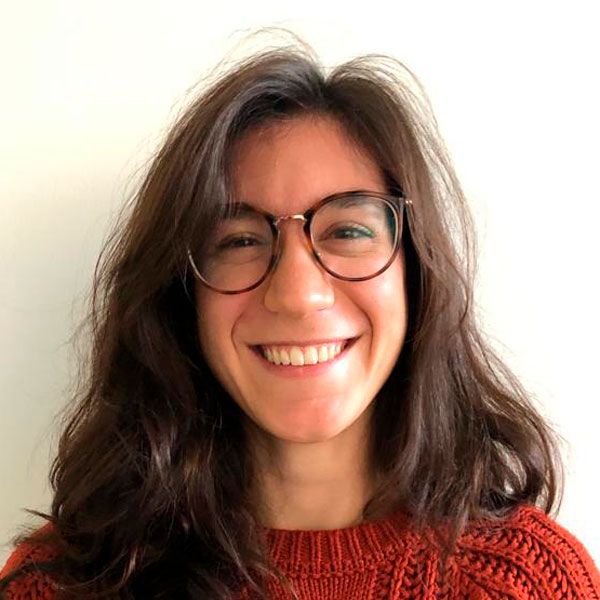
Sara Passuti
Sara Passuti got her Bachelor degree in Optics and Optometry at the University of Florence in 2018, with a thesis work in psychophysics conducted at the Italian Institute of Optics (INO-CNR), aimed at the assessing of ocular accommodative astigmatism.
In 2021 she got her Master degree in Materials and Nanotechnology at the University of Pisa, where she firstly got close to electron diffraction and crystallography. During her internship in the IIT group at the NEST Laboratory in Pisa, she explored solvothermal and mechanochemical synthesis of Metal-Organic Frameworks (MOFs) and characterized them through X-Rays Diffraction (XRD) and Transmission Electron Microscopy with Precession Electron Diffraction Tomography (PEDT).
She decided to continue on the road of electron crystallography by applying to the European NanED doctoral fellowship. She is now working on the project “Electron crystallography of nanodomains in functional materials” at CRISMAT Laboratory (CNRS) in Caen (France), where she is analyzing thin films and ceramic materials through Electron Diffraction.
Her aim in the context of this project is to strengthen her skills in the field of Electron Diffraction in order to contribute to the progress of these techniques and to the expansion of their applications.
PhD Project 12: Electron crystallography of nanodomains in functional materials
Supervisor: Philippe Boullay
Hosting Institution: Centre National de la Recherche Scientifique - Laboratoire de Cristallographie et Science des Matériaux
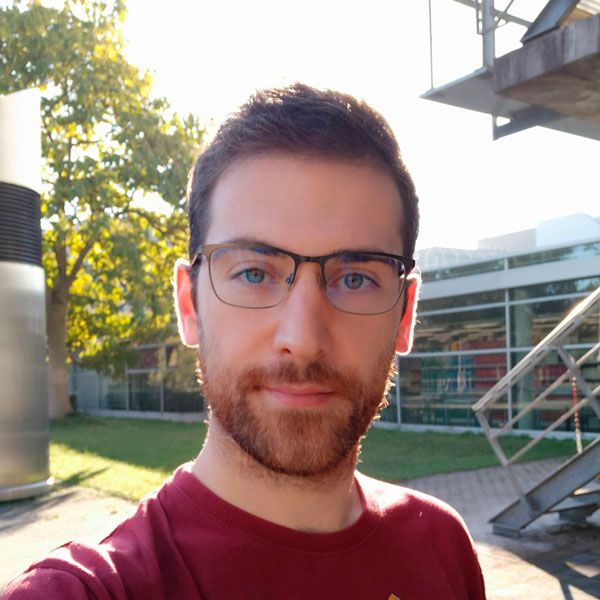
Marco Santucci
Marco Santucci studied Materials and Nanotechnology at the University of Pisa (Italy), Department of Civil and Industrial Engineering, where he obtained his MSc degree in 2020, with an MSc thesis on the “Optimization and Evaluation of Noble Metal / Transition Metal Oxide Nanocatalysts for Hydrogen Generation” developed at the laboratory of the Center of Nanotechnology Innovation@NEST, a centre of the Istituto Italiano di Tecnologia network in Pisa. Supervisor: Prof. M.Gemmi, Dr. V.Voliani. Santucci earned a BSc in Chemistry at the University of Florence (Italy) in 2018, with a BSc Thesis on “Spectroscopy Study of the High-Pressure Crystallization of Stoichiometric Crystals of Methane Hydrate Phases I and II” developed at the LENS laboratory in Florence. Supervisor: Prof. R.Bini, Dr. S.Fanetti.
PhD Project 9: Electron Crystallographic Applications for Defect Structures of Nanocrystals
Supervisor: Ute Kolb
Hosting Institution: Johannes Gutenberg Universitat Mainz
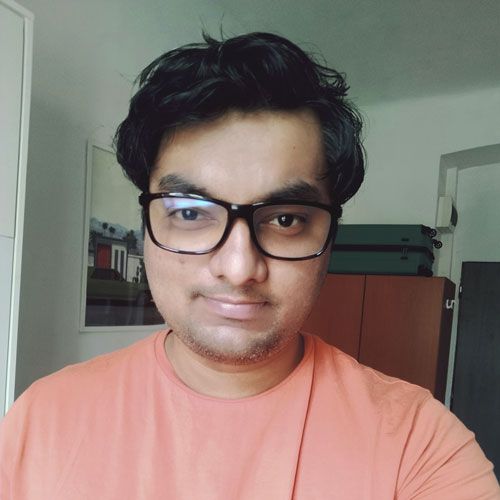
Ashwin Suresh
I graduated with a bachelor’s degree in Electrical and Electronics Engineering from Anna University, in 2015 and a master’s in Nanotechnology from SRM Institute of Science and Technology in 2017, Chennai, India.
My master’s thesis was on “Structural and Magnetic Properties of Electrospun Heusler Alloy Nanowires,” this engendered my interest in different nano/micromaterial synthesis and characterization techniques. While doing my thesis, I understood that size, shape, processing temperatures, and material concentration affected the properties of my heterostructures and their behaviour in different conditions. This made me realize that new systems with better manifestations of unique, synergistic magnetic, photonic, and electronic properties can only be envisioned by understanding the microstructural properties and the electron matter interactions of the systems.
I have worked for one year as a junior research fellow (for a project: “Structural investigation of organometallic perovskite materials.”) at SRM Institute of Science and Technology, India. This has provided me with hands-on experience in both Powder X-ray diffraction (PXRD) and electron diffraction (ED) along with the Rietveld Refinement of the XRD data.
I started my PhD in Lukas Palatinus group at the Institute of Physics (Fyzikální ústav – FZU) in Prague as a part of the European NanED Programme (ESR 5) on “Charge density analysis from 3D ED data”. I will be working on validating and optimizing 3D ED data for charge density studies, which will allow the study of bonding effects in different types of materials.
PhD Project 5: Charge density analysis from 3D ED data
Supervisor: Lukas Palatinus
Hosting Institution: The Institute of Physics of the Czech Academy of Sciences, Prague, Czech Republic
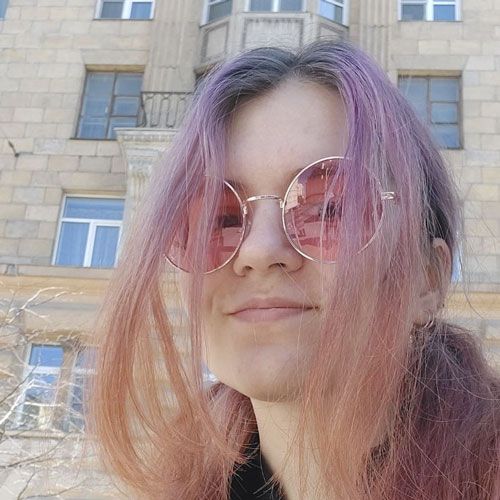
Angelina Vypritskaia
Angelina finished Saint Petersburg State University in Saint Petersburg, Russia, in 2022. There she got her Bachelor's degree in Chemistry with thesis work in electrochemistry, aimed at the effect of synthesis method and binder type on electrochemical properties of Co₃O₄ as an anode material for lithium-ion batteries. Also, she worked with vanadium oxide and gel polymer electrolytes. During her studies, she spent one semester at Uppsala University as an Erasmus exchange student.
Since the autumn of 2021, she has worked at the Institute of macromolecular compounds at the Russian Academy of Sciences. Angelina researched Machine Learning applications for chemistry space exploration and inverse design of high-performance materials there.
In 2022, she joined the NanED project as a Ph.D. student. Her aim in the context of this project is to establish strategies for the automatization of the SerialED/RED technique and its application for MOFs and pharmaceutics.
PhD Project 11: Development of serial (rotation) electron diffraction and its application on MOFs and pharmaceutics.
Supervisor: Prof. Xiaodong Zou
Hosting Institution: Stockholm University
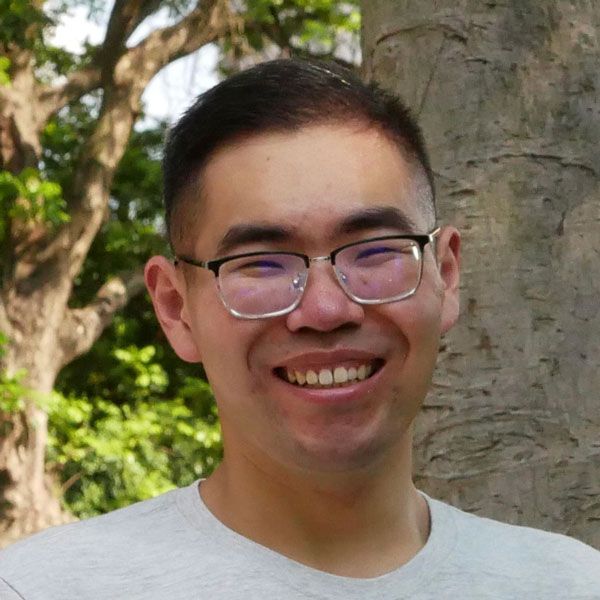
Lei Wang
Lei Wang got his Bachelor degree in Chemical Technology at Zhengzhou University in 2018. Then he got his Master degree in Environmental Engineering at Zhengzhou University and joint education by Dalian Institute of Chemical Physics in 2021. The aim of his Master project was to investigate the host-guest interactions between molecular sieve frameworks and organic structure-directing agents (OSDAs), which would direct the synthesis of desired molecular sieves. During his study, he learned the knowledge of crystallography in both powder X-ray diffraction (PXRD) and electron diffraction (ED).
He continued his study of electron crystallography at Stockholm University by applying to the European NanED project. He is now working on the project and developing electron diffraction methods used for protein-ligand interactions at nanoscale. He is expected to solve protein structures with different ligands and enable the method in structure-based drug discovery.
PhD Project 10: Development and application of electron crystallography methods for studying protein-ligand interactions.
Supervisor: Hongyi Xu
Hosting Institution: Stockholm University